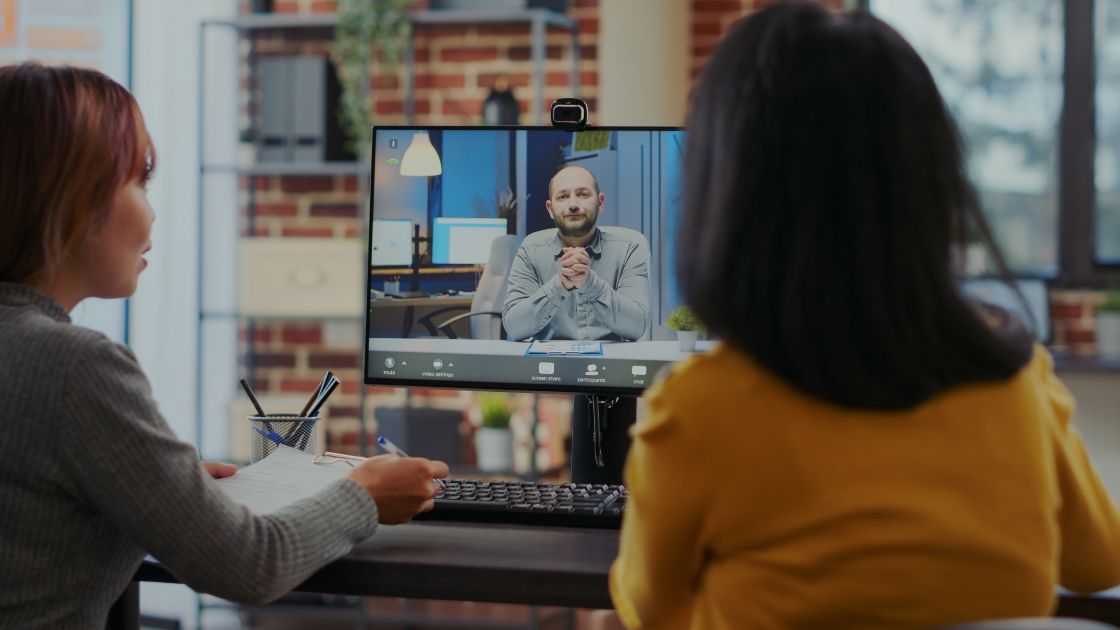Digital Leadership Is Human Leadership

Image is from freepik.com by @DCStudio.
"Digital Leadership"
Sounds impersonal, doesn't it?
After nine years of building a successful media company with my former business partner, leading all-remote teams, and hiring talents from all over the world, here's my biggest insight:
Digital leadership is human leadership.
Before I unpack what that means, let's first examine the trend of remote work.
Is remote work still relevant?
Short answer: yes. It's still relevant, and it will be even more so in the future. Here's what the stats say:
- Globally, multiple surveys confirmed the popularity of remote work. In Flexiple's survey, 98% of respondents said that they enjoyed remote working. Flexjobs' survey yielded similar results: 97% of employees said that they want remote work.
- In Malaysia, it's no less different. Microsoft's survey revealed that 77% of Malaysian employees indicated that they want flexible remote work to continue. Randstad's 2022 survey of Malaysian employees was even more telling: "37% of employees are willing to take a pay cut to work remotely."
Given that remote work will be a major trend in the next few years and even decades, how should leaders think about management and culture differently?
And more importantly, how do you lead when you rarely — or never — see your team in person?
Discover: How Introverts Can Shine In The Remote Workplace
Digital leadership: less style, more substance
Close your eyes and imagine what a leader looks like.
It's probably someone in a business suit or dress, right? At the very least, they have a professional-looking office.
But when you work from home, that's not the case. There are many times when I have company-wide meetings in my shorts — all from the comfort of my bedroom.
In my early days of remote working, I did wear formal business attire in my home office. Over the years, I realised that your clothes, title, and even responsibilities don't make you a leader — it's your ability to listen, connect and guide that does.
When you strip all the luster away from leadership — distill everything down to the very essence — you're left with one thing and only:
How well can you connect with your employees?
Attend. Acknowledge. Align.
These three things are at the heart of great remote leadership:
- Attend: Pay attention to what's being said and what isn't being said.
- Acknowledge: If you can't acknowledge, you can't persuade.
- Align: Align the professional with the personal.
While many leadership books will preach any of the above, the importance is at least 10x greater for remote leaders. Why? Two reasons:
- Miscommunication is more likely when you lack nonverbal cues, and when you work across time zones. That's what I've experienced, and that's what research from The Institute of Leadership & Management (ILM) says.
- Collaboration is more challenging: According to a large-scale study of remote Microsoft employees, communication between team members was "more siloed and less stable". Without intentional effort, it can be much harder to brainstorm ideas and solutions across teams.
With the stakes in mind, let's go through each of the leadership elements I mentioned, and more importantly, how they play out in your communication with remote employees:
Attend: Pay attention to what's being said and what isn't being said.
Paying attention is about two things:
1. Check in regularly and frequently.
Almost half of HBR survey respondents confirmed the importance of check-ins. But why is doing so crucial?
Apart from compensating for the lack of in-person contact — making them feel less isolated — this helps you develop a pulse on the ups and downs of the employee's motivation. (No, forget about the idea of employee monitoring software.)
To avoid overwhelming your employees, here's how you should check in:
- Keep the daily check-ins brief. A quick 10-minute call is more than enough to establish rapport. The mistake I've made is letting daily meetings run longer than they should, which leads to Zoom fatigue.
- Schedule a weekly one-on-one meeting to debrief on the workweek and discuss bigger topics.
- Teach your employees to "manage up". Rather than you always playing the proactive role, encourage them to report back to you if they have any questions.
2. Listen to the presence — or absence — of the employee's emotions.
As you check in with your employees, train yourself to notice even subtle verbal and non-verbal cues from them. For example, if you're in a Zoom meeting with an employee and she says "I'm fine", but she seems a bit tired, probe deeper. You could ask: "What does fine mean?"
You may like this: 6 Approaches to Make Employee Listening A Priority
Acknowledge: If you can't acknowledge, you can't persuade.
Acknowledgment is more than just recognising your employees for what they say and do for the company. It's about making your employees "feel felt", as Dr. Mark Goulston would say, and it's expressed in a few ways:
I hear you.
- I understand you.
- I appreciate you.
- I care about you.
When integrated into the check-in process I mentioned above, acknowledgement can do wonders for an employee's engagement. According to a Great Place To Work survey, the #1 driver of great work comes down to two words:
“Recognise me”
Think about it: How would you feel when someone sees the validity of your opinions and the value of your work? Now, how would you feel without that?
Apart from verbal acknowledgement, consider getting your employee cards and gifts, too — these physical mementos add to the feeling that they're working in a team, vs. all on their own.
Align: Align the professional with the personal.
Ultimately, what makes digital leadership human is this:
Connecting the dots between an employee's professional and personal life.
Some call it work-life integration, but I think the truth is far simpler than that. Work just isn't that separate from life. Whatever emotions we have at home, we bring them to the workplace, and vice versa (even if we try our best to hide them.)
So, why not acknowledge the influence of your employee's personal motivations, and even use it to your advantage?
As remote leaders, our No. 1 job is to help an employee see how their career and personal goals can be achieved in the company. To paint a picture of growth and progress with them, so that they don't remain stuck or lost when challenges arise.
As one of my clients, a $150M company founder, said:
"When you help them win, they will help you win too."
Leaderonomics.com is an advertisement free website. Your continuous support and trust in us allows us to curate, deliver and upkeep the maintenance of our website. When you support us, you allow millions to continue reading for free on our website. Will you give today? Click here to support us.
Leadership
Tags: Be A Leader, Engagement, Understanding Emotions, Digital, Team Leadership
Ian Chew is the founder of Deeper Conversations. Despite his social anxiety, he's had conversations with over 10,000 people, and he's been featured by top media outlets like CBC, Inc. Magazine, and TEDx. As a copywriter, he worked with top communicators like Eben Pagan, Michael Simmons, and Amir Ahmad Nasr to help them reach tens of millions of people.





